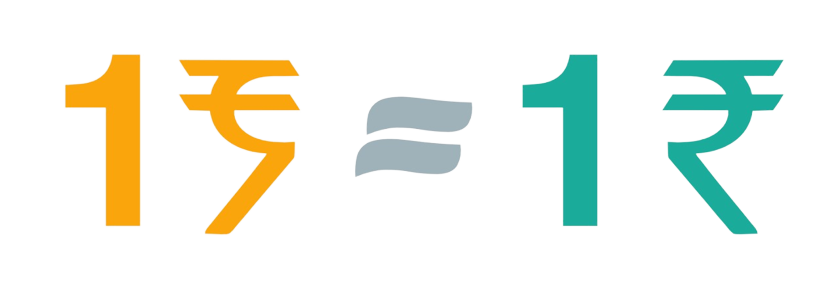Content
- Municipal Bond Resilience: Finding Silver Linings in Commercial Real Estate Challenges
- Interest expense for a finance lease
- Daily Interest vs Monthly Interest
- Debt Scheduler Interest and Accrued Interest Calculations
- Monthly Payment Formula
- Learn About Quicken Loans
- Accrued Interest Calculator 【Calculate Cost of Interest】
- Interest Expense Calculation Explained with a Finance Lease Example and Journal Entries
- Apply Online with Rocket Mortgage
Also, interest revenue is credited $150 for the interest earned during the current period. Although it is possible to record the interest on a daily basis, this involves excess record keeping. For this reason, a single adjusting entry is made at the end of the accounting period. Once the loan is made, the Smith Company immediately starts earning interest revenue. However, the revenue is not recorded until the end of the accounting period (in this case, 31 December).
Most precisely, this is calculated as the number of days divided by 365. However, amortization tables are generally divided into monthly periods. As a result, some amortization tables simplify the periodic interest rate to be 1/12 of the annual interest rather than base it on the number of days per month. Accrued interest on a bond refers to the interest that has been earned but not yet paid since the most recent interest payment. At the end of this accrual period (typically six months or a year) bonds generally pay interest. Depending on the bond, interest can be calculated in different ways.
Municipal Bond Resilience: Finding Silver Linings in Commercial Real Estate Challenges
It refers to the accumulated interest due for receipt of payment but not received or paid, as the case may be. It is recorded at the end of the accounting period, i.e., on the balance sheet date, to reflect the accurate and fair view of the accounting. The accrued interest calculation is a key component of the money exchanged when buying and selling corporate bonds. While corporate bond coupon
payments are made semi-annually, bondholders earn interest every day. This interest accrues on corporate bonds until the two coupon payment dates,
which are typically a) the month and day of a bond’s maturity date and b) six months from this date.
- To put it simply, accrued interest is the total interest accumulated on a bond since its last coupon date.
- To combat this issue, the party buying a bond will pay the accrued interest to the seller of the bond on top of the price of the bond during the sale.
- Common examples of finance leases include leases for equipment and vehicles.
- Bond being the negotiable instrument, can be transferred at any time, so in that case, the seller is entitled to receive the interest apart from sale proceeds.
- The bond buyer is then reimbursed at the next coupon date as they will receive a full interest payment even though they only held the bond for a portion of the time since the last coupon payment.
- These estimates can not only inform prospective first-time borrowers but current homeowners as well.
- Then the appropriate annual interest rate is multiplied by the fraction of one year for which the interest expense is being calculated.
The buyer will have to pay accrued interest to the seller as part of the total purchase price when purchasing bonds in the secondary market. These are bonds that have earned interest, but the interest payments have not yet been made to the bondholder. The bond issuer is responsible for paying the accrued interest at a later date.
Interest expense for a finance lease
Using the facts and circumstances presented we used LeaseQuery’s free present value calculator to compute a present value of remaining lease payments of $387,793. No other lease incentives, accruals, or How to Calculate Accrued Interest Payable initial direct costs exist for this lease. At commencement, the lessee will record a lease asset and lease liability of $387,793. Under ASC 842, leases are either classified as finance or operating.
- However, the buyer would also receive a coupon payment of $250 in three months on March 1; this makes up for the previous accrued interest payment when they bought the bond three months earlier.
- For example, if a bond had an August 1, 2025 maturity date, it would pay interest February 1 and August 1 every year.
- Interest accrues all through February, and the note is then due on the 75th day.
- Accrued interest is a part of the accrual-based accounting system.
- The total accrued interest for the 9-month term of the loan is $675, or $10,000 x .09 x 9/12.
This is the Initial Book value of a bond when it was bought or sold. This would violate the matching convention because no revenue would be recognized in 2019 and too much would be recognized in 2020. Get instant access to video lessons taught by experienced investment bankers. Learn financial statement modeling, DCF, M&A, LBO, Comps and Excel shortcuts.
Daily Interest vs Monthly Interest
This rate stays consistent throughout the same month and applies at the end of the month. The overall amount varies depending on how many days are in the month. So, for example, you’ll probably pay more in March than in February, which is a shorter month. Accrued interest gets calculated at the end of the loan’s accounting period. The first cost that your repayment covers is the principal, or the original balance you borrowed. But while every homeowner must pay interest on their loan, interest can still function differently for each borrower.
A bond is a debt obligation for the borrower and is an asset for the lender. The interest on bonds is generally known as coupons and is paid yearly, half-yearly, quarterly, or as decided at the bond issuance. For example, there is a bond in which interest accrued from April to September will be received in October by the buyer. Hence apart from the bond’s market price, the buyer also has to pay the interest for three months to the seller, which he will receive from the organization in October.
The day count convention for monthly and yearly interest payment is 30 and 360 days, respectively, which sums up equally and makes calculations easier. Joey wonders if the loans underlying a CDO can have different interest payments periods such as monthly, quarterly, semi-annual or annual. Monica tells him that there are differing tranches to a CDO and different tranches can account for different payments. Differing payment can also be used to create a given single payment type CDO.
What is the formula for interest accrued daily?
Multiply your principal balance by your interest rate. Divide your answer by 365 days (366 days in a leap year) to find your daily interest accrual or your per diem. 3. Multiply this amount by the number of calendar days that have elapsed since the date of your last payment to find your interest due.
The former bondholder still needs to be compensated for their period of ownership, regardless of whether or not they sold it. To combat this issue, the party buying a bond will pay the accrued interest to the seller of the bond on top of the price of the bond during the sale. The bond buyer is then reimbursed at the next coupon date as they will receive a full interest payment even though they only held the bond for a portion of the time since the last coupon payment. The amount of accrued interest is posted as adjusting entries by both borrowers and lenders at the end of each month. The entry consists of interest income or interest expense on the income statement, and a receivable or payable account on the balance sheet.
Joey likes to live a frugal lifestyle and so has considerable savings in his checking account. Many still believe you call up your broker and let him tell you what bonds he has available and the price for each bond. For example, if a bond had an August 1, 2025 maturity date, it would pay interest February 1 and August 1 every year. On the maturity date, the
bond issuer is obligated to return your $1,000 par value per bond and to make the final interest payment, provided the issuer has not called the bonds
prior to the maturity date. Assume that on July 21 a city sold a $5,000,000 new issue of municipal bonds.
- The company has use of the vehicle for the entire prior month, and is, therefore, able to use the vehicle to conduct business and generate revenue.
- This interest expense is recorded as an expense in the profit and loss account and reduces the company’s net income.
- There is the trend of lending and borrowing money as debts or loans for financial purposes or the growth of your organization these days.
- Accrued interest, on the other hand, is often calculated on a daily basis.
- Moreover, compound interest is $45,852, or 3740% higher than the monthly computation at the end of the schedule.
- This way, you can seamlessly calculate the accrued interest for any accrual period.





